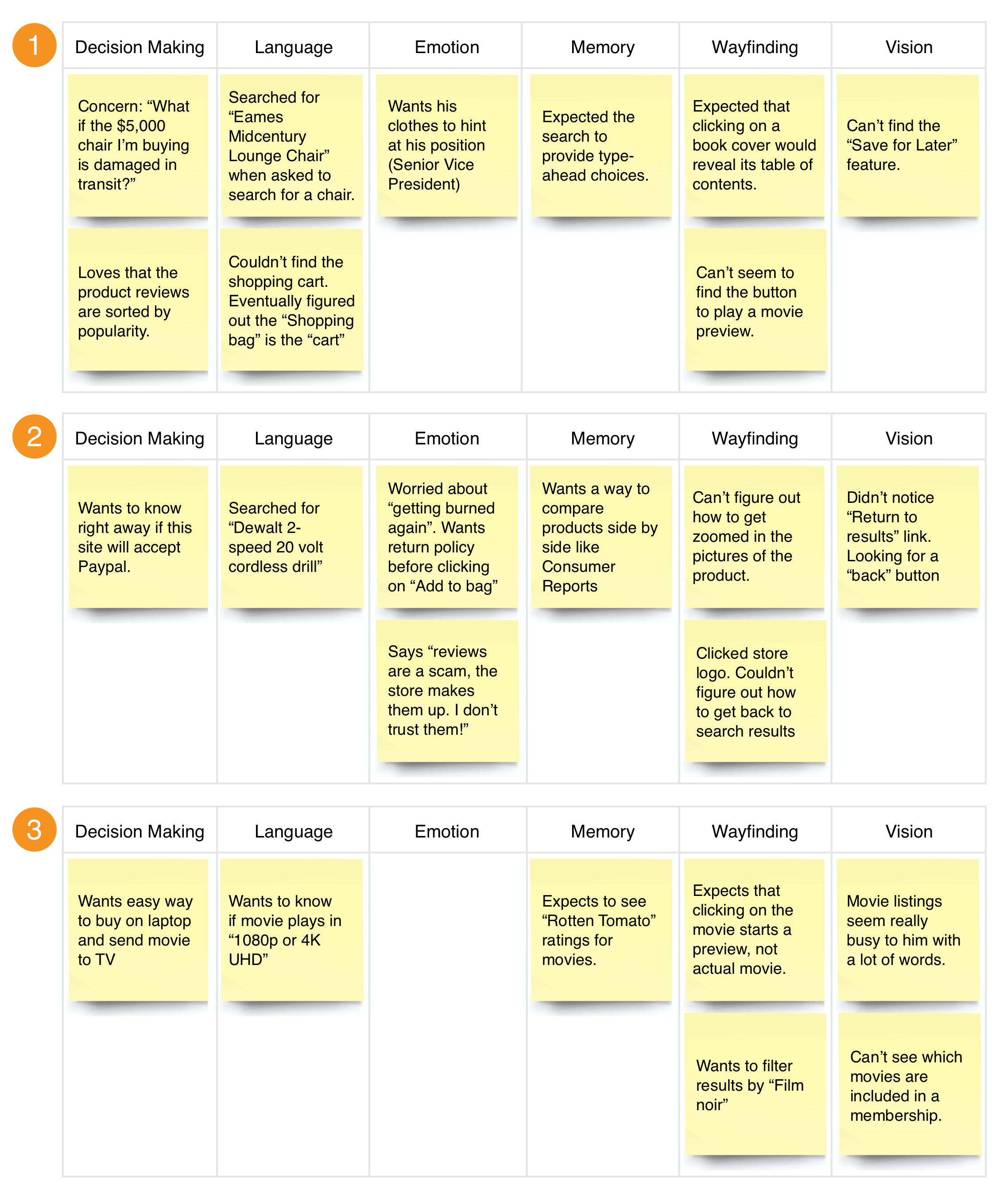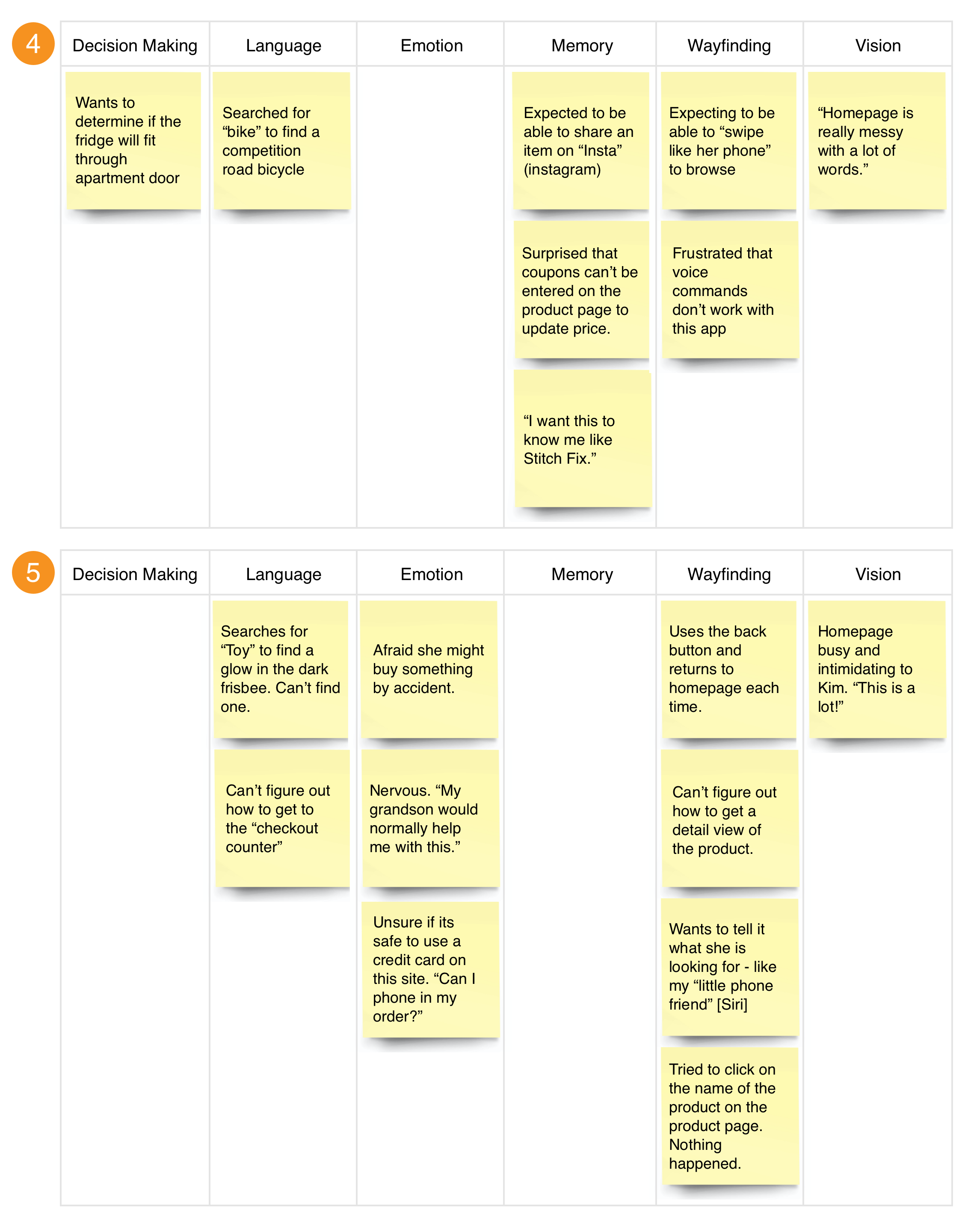Chapter 15 Sense-Making
[ 15 ]
Sense-Making
In Part II, we collected data from contextual inquiry interviews and sorted it into our Six Minds framework. Now we can move onto our next major goals:
- Looking for commonalities among dimensions of the Six Minds (level of expertise, feelings of anxiety, etc.)
- Segmenting customers by their needs (e.g., novices versus experienced professionals, supervisors versus analysts, parents versus children) and relevant dimensions (e.g., word usage, microgoals, underlying assumptions), and building a psychographic profile of each segment
Finally, we’ll end this chapter with a few notes about another system of classification (See/Feel/Say/Do) and why I believe it fails to organize the data in a way that is truly helpful for product and service design.
Affinities and Psychographic Profiles
Using our Six Minds framework, let’s review the findings for our example participants from Part II. We have all our sticky notes grouped by participant and by the Six Minds. Now it’s time to look at these findings and see if there are any relationships between them or any underlying similarities in how these individuals are thinking (Figure 15-1).


Figure 15-1
Findings from contextual interviews, organized by the Six Minds
Language
Looking at the column for ...
Get Design for How People Think now with the O’Reilly learning platform.
O’Reilly members experience books, live events, courses curated by job role, and more from O’Reilly and nearly 200 top publishers.

